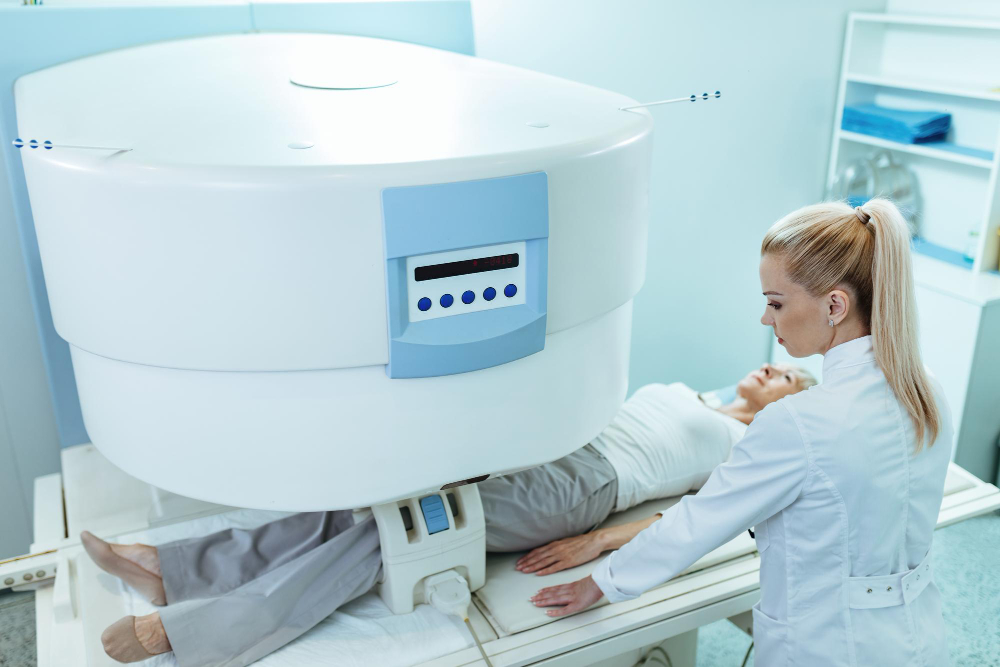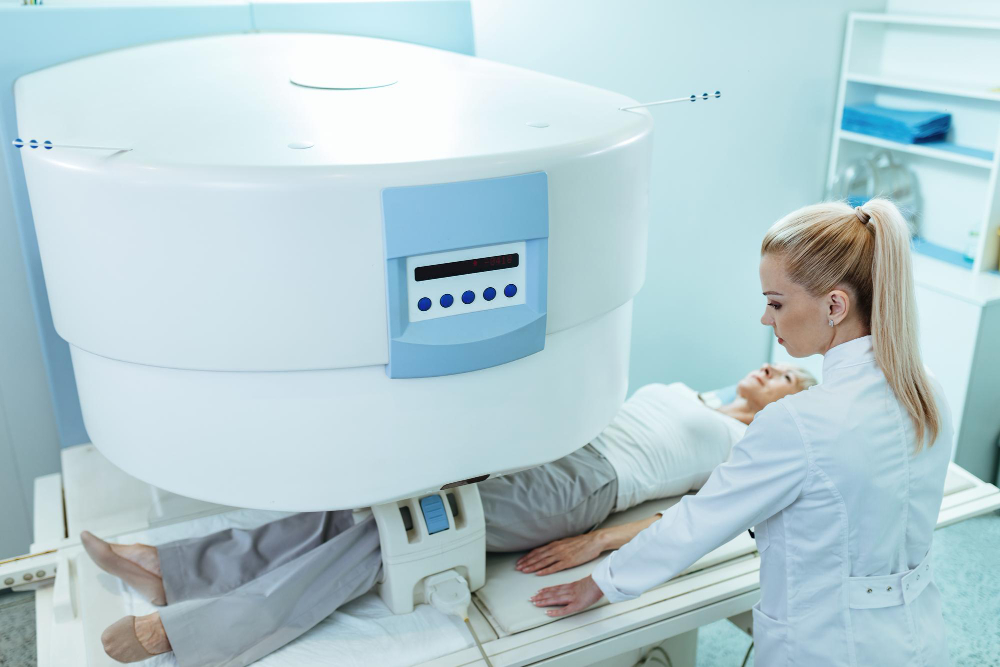Hyperthermia Therapy
Hyperthermia therapy involves employing heat to eradicate cancer cells and reduce tumor size. Additionally, it can enhance the efficacy of other cancer treatments such as radiation therapy and chemotherapy. This type of therapy may be considered for individuals who are not medically fit for surgery or when tumors are in inaccessible locations for surgical intervention.

How Hyperthermia Therapy Works?
Hyperthermia therapy is a procedure that does not require the use of general anesthesia and is not invasive. It consists of raising the temperature of tumors to a range of 104 to 111 degrees Fahrenheit (40 to 44 degrees Celsius). By using internal and external temperature probes, doctors can continually monitor the therapeutic temperature to ensure proper treatment delivery.
When exposed to heat, the blood vessels within the tumor expand, allowing more oxygen to flow into them. This increased supply of oxygen enhances the sensitivity of the tumor cells to conventional treatments like radiation and chemotherapy.
Furthermore, studies have illustrated that the elevated temperature can enhance the immune systems of certain individuals, enabling them to effectively combat cancer.
Hyperthermia therapy can serve as a significant treatment for tumors in areas that have previously undergone radiation therapy.
Conditions Treated

Conditions treated include:
- Breast cancer that has returned or has spread to nearby tissues or lymph nodes
- Cervical cancer, locally advanced
- Melanoma
- Neck cancer
- Prostate cancer, locally advanced
- Uterine cancer, locally advanced
Hyperthermia is applied for the treatment of advanced and persistent tumors as well as for the treatment of large and bulky tumors.
Does hyperthermia therapy have various forms?
Hyperthermia treatment comes in various forms, such as:
- Local hyperthermia therapy.
- Regional hyperthermia therapy.
- Whole-body hyperthermia therapy.
Local Hyperthermia
This specific form of hyperthermia involves the application of intense heat to a small group of cells or a tumor. By utilizing local hyperthermia, cancer can be treated effectively and without the need for surgical intervention.
Various types of energy can be utilized, such as:
- Radio waves
- Microwaves
- Ultrasound waves
Heat may be delivered using:
- A device located outside the body that provides warmth to tumors located close to the body’s surface.
- A device used to transfer heat to cancerous growths inside a body cavity, such as the mouth or anus.
- Radiofrequency ablation (RFA) is a procedure where a thin needle-like device is used to transmit radio wave energy directly into the tumor, with the purpose of eliminating cancer cells. RFA is commonly employed as a form of local hyperthermia, and it is primarily utilized to treat tumors in the liver, kidney, and lungs that are inoperable.
Regional hyperthermia
Regional hyperthermia involves heating a specific area of the body, like an organ, limb, or hollow space, but the temperature is not high enough to directly eliminate cancer cells. Typically, it is administered alongside chemotherapy or radiation therapy.
One method, referred to as regional perfusion or isolation perfusion, involves separating the blood supply to a specific section of the body from the overall circulation. The blood within that particular area is directed into a heating device and then returned to the region to raise its temperature. At the same time, chemotherapy can also be administered through this process. This technique is being examined as a potential treatment for certain cancers located in the arms or legs, such as sarcomas and melanomas.
An additional method to treat cancers in the peritoneum involves combining surgery with a hyperthermia technique. This technique, known as continuous hyperthermic peritoneal perfusion (CHPP) or hyperthermic intraperitoneal chemotherapy (HIPEC), involves circulating heated chemotherapy drugs through the peritoneal cavity during surgery. Clinical studies have shown the potential of this method in treating specific types of cancer, but it is still uncertain if it is more effective than other treatment options.
A different method of regional hyperthermia is referred to as deep tissue hyperthermia. In this type of treatment, special devices are utilized, which are positioned on the organ or body cavity’s surface, aiming to deliver intense waves of energy to a specific region. These devices emit radiofrequency or microwave energy, which effectively raises the temperature of the targeted area.
whole-body hyperthermia therapy

Researchers are currently investigating the effectiveness of whole-body heating as an adjunct to chemotherapy for treating metastatic cancer. Various methods, such as heating blankets, warm-water immersion, and thermal chambers, can be employed to raise the patient’s body temperature. Those undergoing whole-body hyperthermia may receive sedation or light anesthesia to induce a sense of calm and drowsiness.
An individual’s body temperature can increase resembling a fever, also known as fever-range whole-body hyperthermia. Research indicates that this can activate specific immune cells for a few hours and elevate the concentration of cell-destroying substances in the bloodstream. Certain scientists intentionally elevate body temperature to approximately 107°F for brief durations. Additionally, other studies are examining the combination of hyperthermia, chemotherapy, and other treatments to enhance the immune system’s ability to combat cancer.
Benefits of Hyperthermia
Heat therapy offers numerous advantages. Utilizing hyperthermia treatment is highly effective in addressing cancers that have previously undergone radiation therapy.
Hyperthermia proves beneficial for localized small tumors and is especially effective for patients with cervical, head, and neck cancer. Additionally, it offers advantages for individuals diagnosed with melanoma or other forms of locally advanced cancers.
The advantage of hyperthermia treatment lies in its ability to precisely focus on a specific temperature within the body. Additionally, it offers a high level of accuracy in targeting the desired area. Doctors utilize hyperthermia as a component of cancer treatment rather than as the sole approach.
An additional advantage of hyperthermia treatment is the positive reaction your body has to the treatment. This includes an enhanced immune response, with your body activating cells that increase the effectiveness of immunotherapy. Currently, ongoing clinical trials are examining the impacts of hyperthermia and immunotherapy.
What happens after hyperthermia therapy?
Hyperthermia therapy can be performed as an outpatient procedure, allowing patients to return home on the same day. However, if hyperthermia therapy is combined with surgery, it is necessary to stay in the hospital overnight or for a few days, which is a standard practice after surgical procedures. The duration of recovery varies depending on the specific type of therapy, with some patients being able to resume their normal activities within a few days. However, recovery after surgery generally takes several weeks.
While you are recovering, your healthcare provider may give you pain medication as prescribed. Additionally, you will undergo periodic blood tests or imaging exams to determine whether the tumors have decreased in size or if any cancer cells still exist in your body.
Treatment in Türkiye:
The medical staff of surgical teams, doctors, and consultants at REHABTÜRK can provide the best treatment options and free consultations, striving to stay up-to-date on the latest medical technologies and methods.
